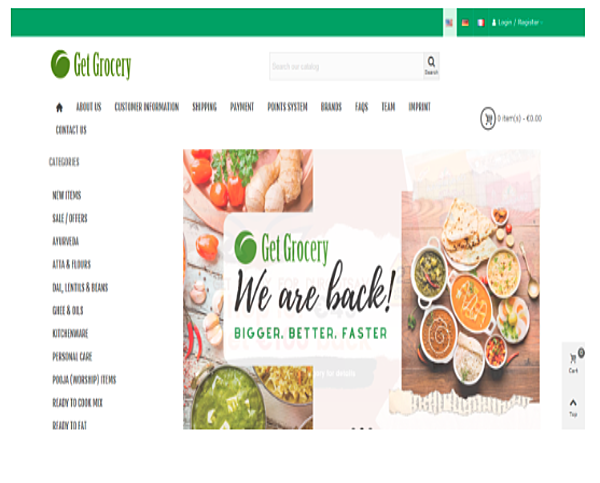Going global increases revenue potential, foreign investment opportunities, and brand reputation for a business.
You meet so many people – employees and partners – while spreading the wings of your business. This bonding allows you to understand the market and the locals and hence, to develop growth strategies.
ecommerce and selling your products overseas
In the past, it was an uphill battle to do business in a foreign country. You needed to follow international business laws and regulations – as applicable in your country and in the country in which you wanted to sell.
You also needed an effective global business strategy to figure cost calculation, pricing, and universal payment methods. To establish a name for your brand, your supply chain required constant monitoring.
On the other hand, ecommerce, the new-age way of trading, is expected to see a more than 200% revenue increase by 2020.
Smaller ecommerce entrepreneurs easily boost their sales by 10-15% in a short span of time. More and more people prefer online shopping.
According to an estimate, 1.8 billion people will enter the consuming class by 2025, annually spending $30 trillion.
Selling your products to a global audience through your ecommerce website is going to be a profitable yet safe business.
Are you also planning to sell your products abroad through your website? Here are some tips:
1. Get an ecommerce website
First things first! Without an ecommerce website, you won't be able to sell online. If you already have a website, it's time to give it an ecommerce makeover using a trusted ecommerce website builder and convert it into a multi-language or multi-national website.
For implementing a multi-language website, you need to use the right website builder that ensures your website is easy to use, not just for you but for your customers across the world.
Use Get Grocery as an example. The website features multiple languages and targets multiple countries.

2. Have a scalable ecommerce business plan
Your global business plan should be scalable. It should include your short- and long-term goals, and a road map that details how the goals will be achieved.
It's critical to build a plan that can be scaled as needed. Here's a step-by-step guide for writing a perfect business plan.
3. Understand local laws
Check the rules for ecommerce sellers in your country. You need to get certain permissions from the government to send your products abroad.
Additionally, double-check the regulations of the country in which you are selling or delivering your products. Make sure you aren't violating any laws. Here are the 7 golden rules for international selling.
4. Find a marketplace
With multi-vendor platforms like Amazon and eBay, there's been a great rise in the number of smaller ecommerce sellers. Small, new and emerging ecommerce sellers often prefer listing and selling their products through these ecommerce platforms.

Such platforms are a great way for cost cutting. Amazon.com allows vendors to establish warehouses at multiple locations, through which customer orders can be delivered fast at low shipping charges. For example, iCustomLabel is selling products on Amazon.

Similarly, you can use a marketplace based on your targeted locations.
5. Partner with a company that can do it all
Find a partner that can take the responsibility of warehousing, shipping and delivery.
Although there will be a lot of paperwork to create such an agreement, it will be the safest and most cost-effective way of global selling.
For faster and better reach, you can develop ties with more partners across locations.
6. Accept international payment
You must understand a buyer's preferred payment method initially; there are so many payment methods available these days. However, for the convenience of your customers, implement all popular payment methods and gateways on your ecommerce website depending on the country.
eWallets have recently emerged as a trendy, easy payment method. Make sure you include all popular eWallets as 1 of the payment methods on your website. Also, you can add Amazon currency converter for sellers and Paypal to receive payment.
Here's a list of popular ecommerce payment options. Whichever you choose, make sure it's safe for you and your customers.
7. Reinforce your customer service
Most customers avoid buying from a foreign vendor because of concerns such as incorrect delivery, return and refund, and after-sales service.
Set up a local customer-service desk where your customers can bring their concerns. You will need to make sure that professionals at this point of contact understand and speak the local language.
Also, make sure your customer-support staff has in-depth knowledge of your products and processes.

8. Widen your social presence
The best way for customers to connect with a brand is through social media. You too can leverage the power of social media to find and connect with your customers.
Social media is a powerful tool for ecommerce websites. You can also promote your products and ongoing offers on your social handles. As an ecommerce business, focus on setting up a complete social media presence that provides increased and direct sales opportunities through some networks. You must use social media management tools that will help you in managing multiple accounts simultaneously; you can use tools like SocialPilot to manage, schedule, and analyze your social media account activities.
9. International shipping and return policy
A shipping and return policy is the most important point to consider while selling and purchasing any product globally. You must think about delivery and exchange or return options. As much as possible, you have to give accurate details and estimate times based on your services and service centers based in the country. You can use extensions like shipping suite ultimate to add your shipping zone, shipping conditions and zip code verifications options on the website.
Keap CEO, @ClateMask offers up 3 ways to increase your client referrals to drive more growth for your small business via @businessdotcom https://t.co/HHIUVheM9g
— Keap (@KeapGrowing) October 8, 2019
10. Collaborate with your existing distributors or try drop-shipping
To reduce potential shipping problems you can collaborate with the existing distributors or use a drop-shipping option initially. This will reduce your investment, lower your risk and help you in building trust.
Conclusion
More than 50% of traffic on a website comes from social media. A large number of people access their social network through apps on their phone/tablet. That said, it makes sense to have a website that works flawlessly on any and every mobile device – including laptop, phone, iPad, etc.
Making the most of the top-rated ecommerce plug-ins can help you improve the performance of your website across screens and operating systems.
The success of an ecommerce business depends on the quality of products and services being offered. So, before every dispatch, take the product through mandatory quality checks.


